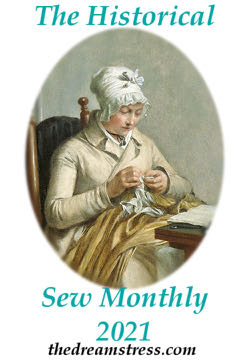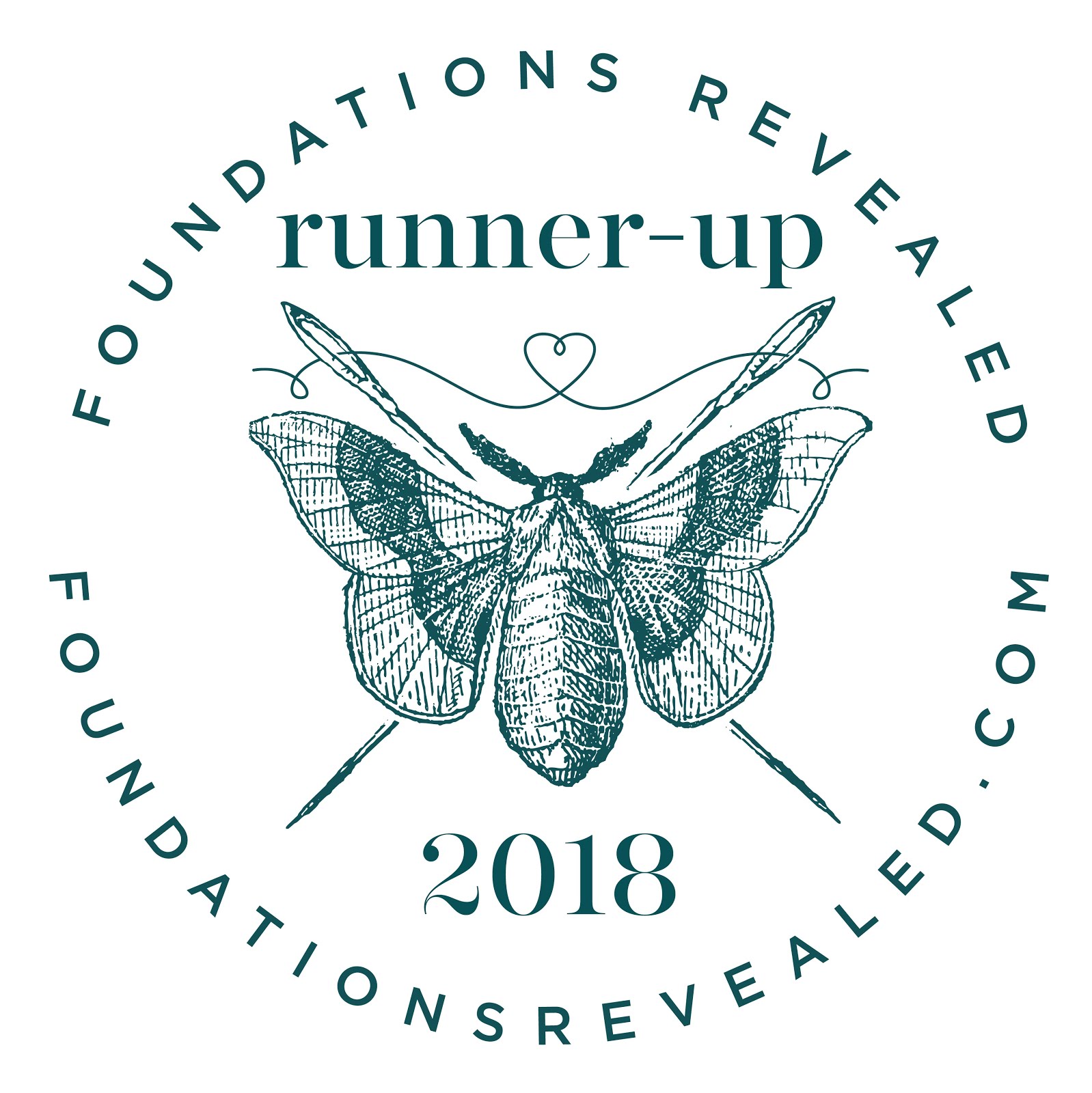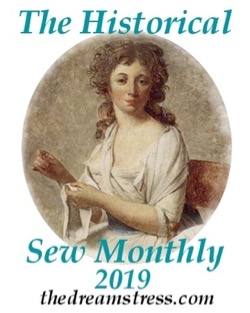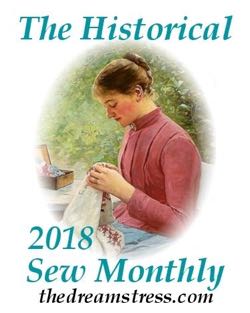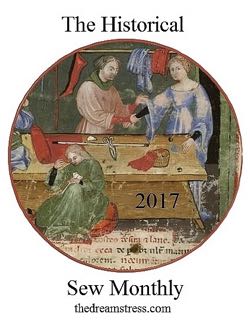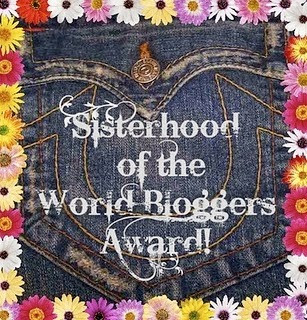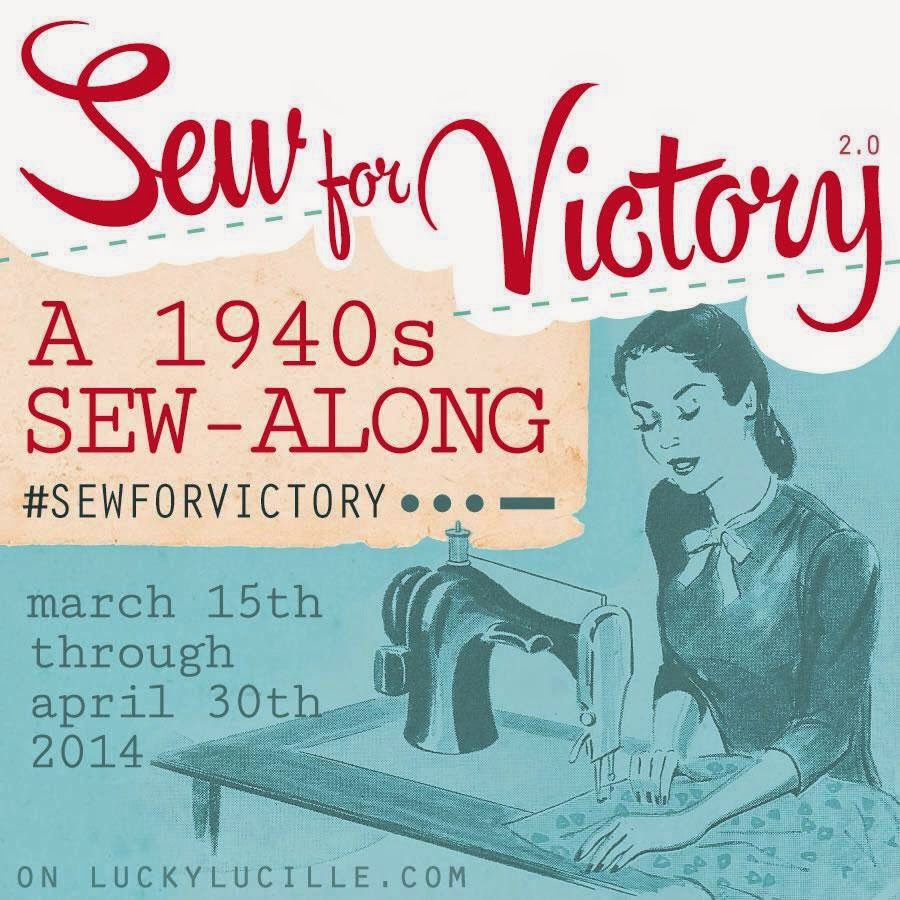Companion YouTube Video: https://youtu.be/YkSb4Arz2Lg
This blog post, and the companion YouTube video, are part of the series creating a 1930s wardrobe.
The Complete 1930s Wardrobe YouTube Playlist:
While the original 7-day event scheduled for May 2020 was cancelled, and the October 2022 was postponed, I'll be wearing the 1930s wardrobe in 2023 for a 12-day Eastern Caribbean tour with stops in five ports. The very special part of this trip is that it will be on board what has long been a dream of mine - the Queen Mary 2. Excited? Absolutely! If you've followed me on social media you know I've been trying to spend time on this gorgeous Art Deco ocean liner. It's a dream come true and I will share the wardrobe and adventure with you!
I've already shared blog posts and companion videos of the sewing of the 1930s bras and tap pants, 1930s slips, and a 1930s corset garter belt. Blog posts links and the YouTube Playlist link will be shared.
Blog Post: https://theperfecttouchvictorian.blogspot.com/2023/05/sewing-1930s-bras-and-tap-pants.html
Blog Post: https://theperfecttouchvictorian.blogspot.com/2023/06/sewing-1930s-slips-1930s-wardrobe.html
Blog Post: https://theperfecttouchvictorian.blogspot.com/2023/08/sewing-1930s-corset-garter-belt.html
The Underpinnings Museum
While searching for girdle and garter belt patterns on Etsy I discovered underthings patterns offered by The Underpinnings Museum. These included some fabulous 1930s patterns and down the rabbit hole I went.
The Underpinnings Museum is an online archive dedicated to the history of underwear. Each object is accompanied by detailed imagery, technical, and contextural information.
Their collections are searchable.
I hadn't been aware of the archive and am so pleased I found it! I'll include a link if you are interested as well.
The Underpinnings Museum pattern offerings on Etsy are also interesting and help support the online archive. I'll share a link.
At the time I was only interested in finding a garter belt to support stockings for more casual wear. The 1930s Kestos Zoma Suspender Belt pattern was offered in multi-size and I purchased it.
And just down the page was the 1930s Kestos Style Bra pattern, also multi-sized. Also purchased.
As I learned, Kestos was a British lingerie brand founded in London in 1925 with its major innovation to feminine underwear in the 1930s being the development of the two separate, distinct, and defined cups for bras.
The Underpinnings Museum on Etsy also offered a pattern for a 1930s Anti-Chafing 'Pantlet' Cut Out Shorts in Sizes UK 8-20. Also wonderful for dancers and anyone seeking a bit more comfort.
With the purchase of the 1930s Kestos Style Bra and 1930s Kestos Zoma Suspender Belt patterns, I was ready to begin another adventure into creating 1930s underthings.
The 1930s Kestos Style Bra
The downloadable pattern includes technical drawings, the original garment pattern and sewing instructions, information and photo detail of the original garment, and individual multi-sized patterns.
I have a bit of red satin left from a destash group purchase and used for several projects, a bit of red embroidered roses on black net trim, some leftover satin double fold bias binding, and 1/4" elastic. (I'll tell you here that the 1/4" elastic was not enough for the heavy satin and I had to redo that portion of the project and replace with 3/8" non-roll knit elastic.)
The pattern for my size is cut.
The satin is cut for the Main Cup. The pattern suggested silk georgette for the four Top Cup pieces but I only had a light satin and cut that. The Top Cup pieces were to provide backing for the embroidery but since my trim extended from one side of the Main Cup to the other side, I omitted the Top Cup pieces.
The cup darts are sewn and pressed.
The trim layout is decided and hand stitched to the cups.
To create a narrow binding on the cups, the double fold bias binding is cut in half lengthwise, machine sewn right sides together to each cup edge, and then turned and hand stitched to the inside edge.
The cups are overlapped as instructed and stitched together by hand along the edge of the topmost cup.
The satin doublefold bias binding is sewn along the open edge to create the shoulder straps. It is sewn to the lower edge of the cups with right sides together, then turned to the inside. The entire length of the underband is then sewn along the open edge leaving an opening for inserting the shoulder straps and the elastic. All measurements are included in the pattern instructions.
I threaded the elastic into the underband from the end using a safety pin, turned the binding in to create a clean edge, and then hand stitched the elastic and binding in place. Here the elastic is pinned inside the underband with the underband gathered.
Another test fit and the elastic is securely sewn and the opening sewn closed. The straps are still pinned to the front.
Buttons are sewn on the underband at the darts.
Thread loops are made to slip over the buttons and secure the elasticized underband to the button.
If, like me, you need a tutorial for techniques you don't use often, I'll share a link for my favorite from Professor Pincushion.
With a final fitting the shoulder straps are attached to the front.
The Finished 1930s Kestos Style Bra
The 1930s Kestos Style Bra is finished and shown here with the black rayon tap pants made earlier.
The 1930s Kestos 'Zoma' Suspender Belt
The 1930s Kestos 'Zoma' Suspender Belt pattern was purchased in downloadable format and, like the Kestos Style Bra pattern, contained technical drawings, information about the original garment and original garment pattern and sewing instructions, graded patterns, and original garment photos.
I'll use the same red satin (Incendiary Red) used for the Kestos Style Bra, with garters given to me by a costume friend, and black hooks and eyes.
I cut the graded pattern for my size. There is a Centre Back Panel, a Side Panel, and guides for the crossover ribbons and ribbon loops.
The sewing instructions called for a single layer of fabric narrowly hemmed on all edges. I've worn suspender belts and know they can take a lot of strain between holding the stockings and sitting. I could see myself strolling down Promenade Deck of the Queen Mary 2 in my split skirt, blouse, and vest with cute shoes and stockings and suddenly a narrow hem fails and my cute stockings are now puddled around my cute shoes. Yikes!
So I decided to sew my version with a double layer which could then be topstitched for added strength.
I've machine sewn seams where possible and then assembled the pieces, inserted ribbon loops for the garters, and pinned the seams closed that will have to be sewn by hand.
The front crossover ribbons I needed were longer than those in the pattern. I substituted the doublefold bias binding sewn closed at the open edge. It is inserted in the four openings and then the remainder of the handstitching is done. The ribbon loops are attached to the crossover ribbons with an embroidered X. All edges of the main belt are topstitched 1/8" and then again 3/8" from the outside edges for added strength.
This is how the belt will look when it closes at the center back with the crossover ribbons in the front.
The belt fits beautifully if I place the hooks and eyes so that the fabric meets at the center. To make sure I sew my hooks and eyes securely (don't want those cute stockings falling!) I watch several YouTube videos from favorite creators as a refresher. I'll share links.
One from Threads Sewing,
and one from Made to Sew.
With the hooks and eyes sewn the belt receives a final pressing and the garters are attached by sliding the hook through the ribbon loops.
Finished 1930s Kestos Style Bra and Kestos 'Zoma' Suspender Belt
They are finished! Time to pull out those cute shoes and stockings that will be worn with a split skirt (also called secretpants) from a 1930s pattern, a parachute silk blouse, the vest made by Maike of Engineering Knits from a 1930s pattern, and the vintage Schiaparelli tie. But you'll see those makes and the wearing of in the future videos.
I hope you enjoyed this blog post and video and I look forward to sharing more of the making of the 1930s wardrobe with you! Thank you for being here!
Love,
Jeanette
The Historical Sew Monthly - December 2023 - Paired to Perfection
The Challenge: Make something that comes in a pair (mittens, stockings, garters, braces etc.) Or make something in which the trim or construction prominently features sets of two.
What the item is: Bra and garter belt
How it fits the Challenge: Designed for upper and lower body parts that appear in sets of two.
Material: Satin, embroidered net
Pattern: The Underpinnings Museum 1930s Kestos Style Bra and 1930s Kestos 'Zoma' Suspender Belt
Year: 1930s
Notions: Elastic, satin ribbon, garters, hooks and eyes, buttons, thread
How historically accurate is it? Patterns developed from a museum collection and materials accurate.
Hours to complete: 15 hours
First worn: Casual wear 1930s day on the Queen Mary 2
Total cost: $20
.jpg)





.png)

.png)
.png)
.png)
.png)
.png)
.png)
.png)
.png)


























.png)

























.png)
.png)














